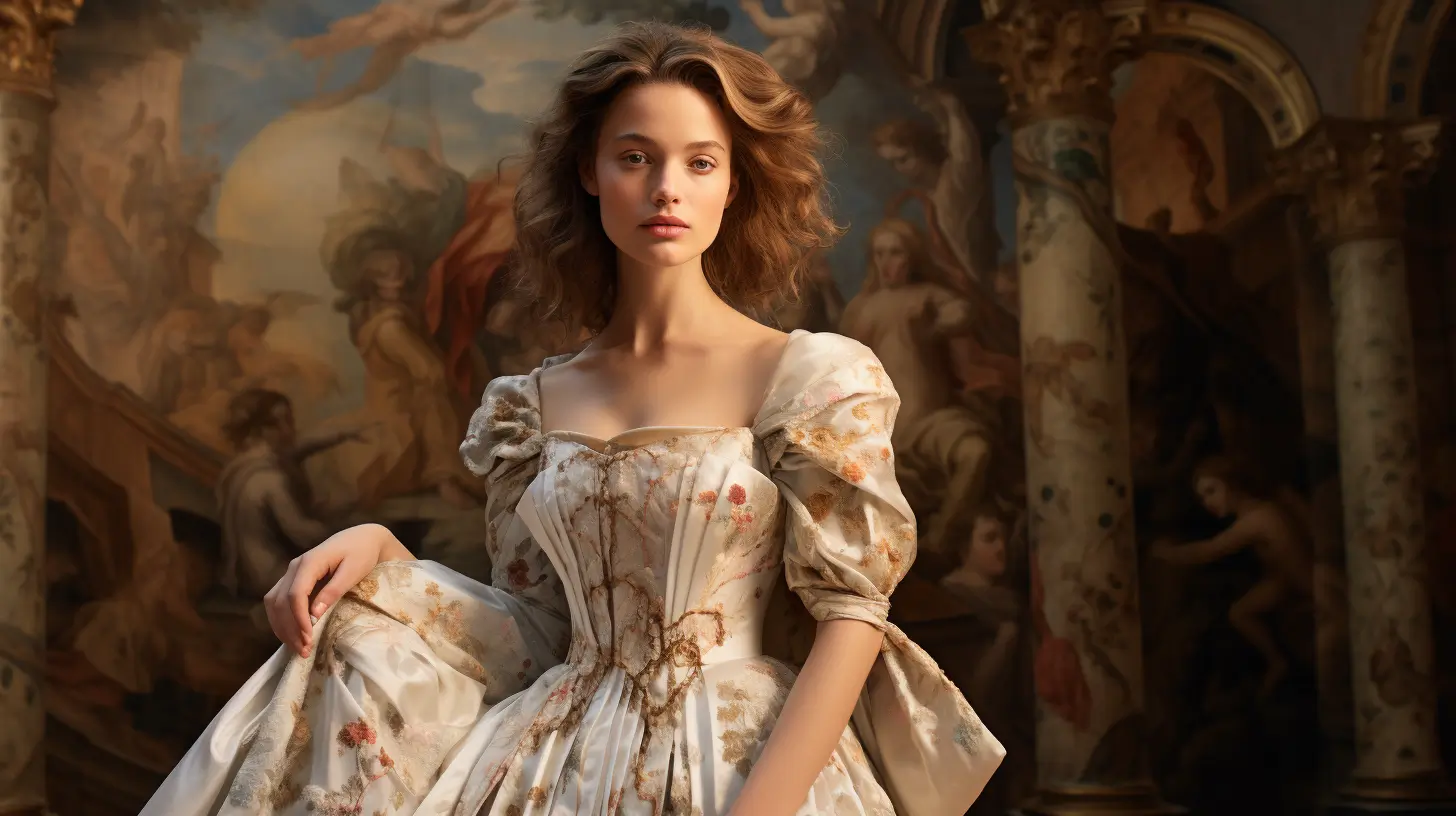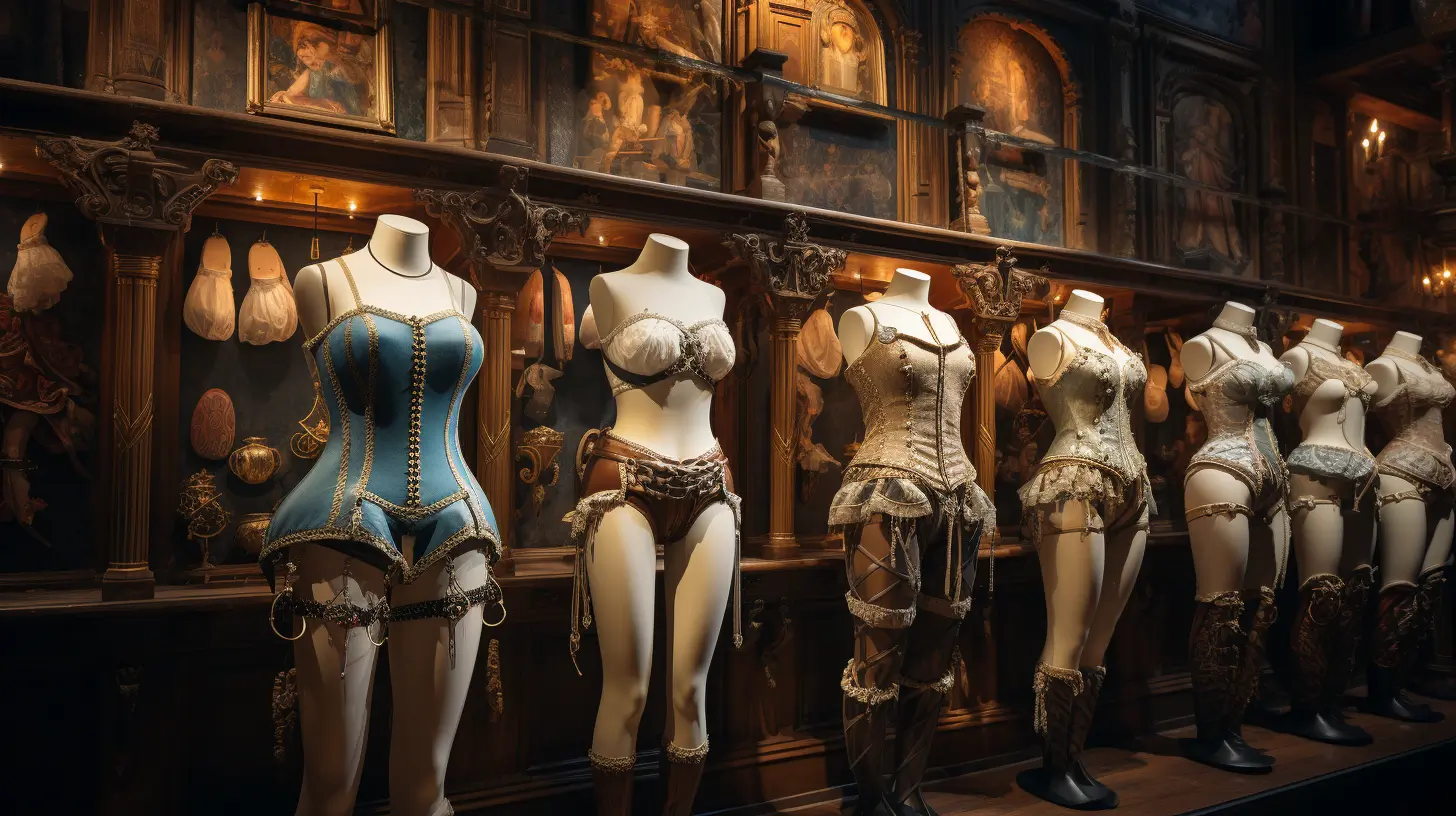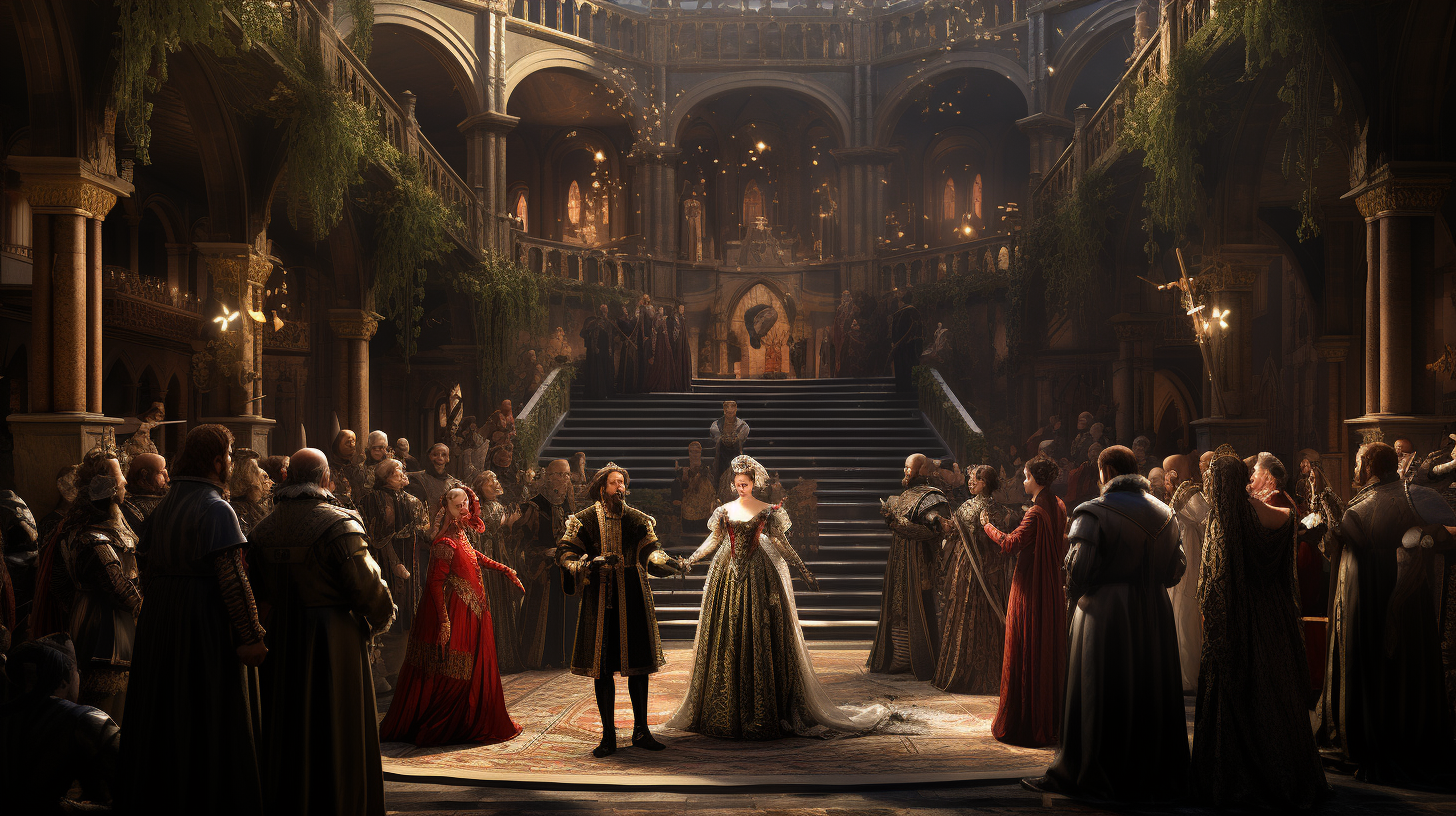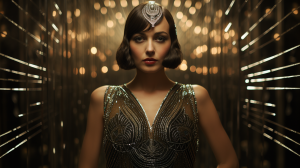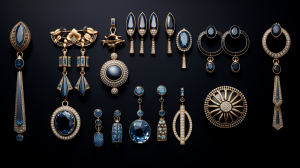
Elegance in the 1950s: Unveiling the Secrets of Mid-Century Glamour
As we step back into the 1950s, let’s immerse ourselves in a world where fashion was more than just fabric and frills—it was a bold statement, a cultural revolution, a symbol of a world emerging from the shadows of war. The 1950s were a decade where elegance was not merely a concept but a lived experience, embodied in every seam and silhouette. This was an era that redefined style, setting the stage for a glamorous, transformative journey in fashion history.
In this exploration, we’re not just flipping through old fashion magazines; we’re opening a time capsule that reveals the heart and soul of mid-century elegance. We’ll navigate through the intricate tapestry of 1950s fashion, from the revolutionary ‘New Look’ that reimagined femininity to the Hollywood icons who became the unofficial ambassadors of style. We’ll also delve into the youthful rebellion that gave birth to a new fashion ethos, marking the rise of the teenager as a force in the fashion world.
This journey is more than a story about clothes. It’s about the spirit of an era, a testament to resilience, and an ode to the art of self-expression. So, lace up your saddle shoes, adjust your cat-eye glasses, and let’s embark on this stylish time travel, unraveling the secrets of mid-century glamour and the enduring legacy of 1950s fashion.
The Birth of the New Look
Picture this: it’s the late 1940s, and the world is just catching its breath after the whirlwind of World War II. There’s a hunger for something new, something fresh—a yearning to step out of the shadows and into the light. Enter Christian Dior, with a vision that would not just ripple but cascade through the fashion world. In 1947, he introduces the “New Look,” and with this, the aesthetic of the 1950s is born.
The New Look was bold and unapologetic in its embrace of femininity. Think cinched waists, creating an hourglass figure that had been suppressed during the war years. Picture voluminous skirts that swished with every step, a celebration of fabric and freedom. This style was a stark departure from the utilitarian, fabric-conserving silhouettes of wartime. It was a declaration, loud and clear: elegance and opulence are back.
But the New Look wasn’t just about fashion; it was a cultural statement. This look represented a longing for a return to normalcy, a craving for luxury and beauty in a world that had seen too much ugliness. Women, who had held down the fort in factories and fields, were now redefining themselves, and fashion became their language of choice.
As we sift through vintage photographs and illustrations, we’ll not only witness the evolution of a style but feel the pulse of an era that was all about making a statement. The New Look wasn’t just a trend; it was a revolution, a pivotal moment in fashion history that we’re about to relive, one stitch at a time.
Hollywood’s Golden Age: The Fashion Influence
Imagine strolling through Hollywood in the 1950s, where the stars shone not just on the silver screen but in the world of fashion too. This was an era where cinematic icons were not just actors; they were the ultimate trendsetters, crafting a fashion narrative that resonated with millions. Hollywood in the 1950s was a dazzling fashion powerhouse, its influence rippling far beyond the red carpet.
Marilyn Monroe, with her glamorous gowns and bold red lips, transformed every outfit into a bold statement of femininity and allure. Grace Kelly, embodying royal elegance, set a standard for refined glamour with her poised and polished style. Then there was Audrey Hepburn, a beacon of chic simplicity, whose iconic little black dress in ‘Breakfast at Tiffany’s’ became an enduring symbol of understated elegance.
These luminaries were fashion icons, their on-screen and off-screen styles shaping the era’s fashion narrative. Hepburn’s capri pants and ballet flats, Monroe’s curve-hugging dresses, Kelly’s A-line skirts and structured handbags – these were more than wardrobe choices, they were declarations of style that echoed around the world.
The influence of these style icons went beyond just inspiring clothing choices. They marked a cultural shift, where their styles resonated deeply with the public, setting new trends and altering perceptions. Their impact was a testament to the power of celebrity in shaping fashion and societal norms.
The era’s male fashion icons, like James Dean and Marlon Brando, introduced a new dimension to men’s fashion. Their leather jackets, t-shirts, and jeans contrasted sharply with the conservative suits of previous decades. They symbolized a new age in men’s fashion, embracing a relaxed, rugged aesthetic that spoke of rebellion and individuality.
Exploring Hollywood’s impact on 1950s fashion reveals more than just sartorial trends; it uncovers a narrative of cultural expression. The stars of this golden era were not just actors; they were pioneers of style, leaving an enduring mark on the fashion landscape and forever changing the way we dress.
Rebellion and the Rise of Youth Fashion
As we delve deeper into the fabric of the 1950s, we encounter a vibrant thread: the rise of youth fashion. This was more than just a trend; it was a cultural shift, a voice of rebellion against the established norms. The decade saw the emergence of the teenager as a distinct cultural group, with their own style, music, and attitudes – all of which profoundly influenced fashion.
In the heart of this youthful rebellion was the birth of rock ‘n’ roll. Elvis Presley, with his swiveling hips and slicked-back hair, wasn’t just a music sensation; he was a fashion icon. He introduced leather jackets, tight jeans, and greaser styles into mainstream fashion, symbolizing a break from the more formal, conservative styles of the previous generation.
This era also saw the birth of the “Teddy Boy” style in Britain, characterized by drape jackets, drainpipe trousers, and thick-soled shoes. Inspired by the Edwardian era, this style was a unique blend of historical fashion and modern rebellion. The Teddy Boys were among the first groups to adopt a style that was distinctly their own, differentiating themselves from the adult world.
For women, the 1950s marked a gradual shift towards more relaxed, informal styles. Poodle skirts, saddle shoes, and fitted blouses became popular among the younger crowd. These styles were fun, flirty, and a far cry from the formality of their parents’ generation. The emergence of teen idols like Sandra Dee and Annette Funicello influenced young girls’ fashion, bringing a sense of innocence and playfulness.
This shift in youth fashion was not just about changing styles; it was about asserting identity. For the first time, fashion was being used by the young to differentiate themselves from the older generation. It was a form of self-expression, a way to rebel against societal expectations, and a declaration of independence.
As we explore this fascinating aspect of 1950s fashion, we’re not just looking at clothing; we’re witnessing the birth of a cultural phenomenon. The rise of youth fashion in the ’50s was a precursor to the more radical styles of the ’60s and ’70s, marking the beginning of fashion as a form of personal and generational expression.
Men’s Fashion: The Subtle Evolution
While women’s fashion in the 1950s made headlines with dramatic changes, men’s fashion underwent a more subtle, yet significant, evolution. The decade painted a picture of masculine elegance, marked by clean lines, tailored fits, and a neat, polished appearance. This era for men was about sophistication and a quiet assertion of style.
The 1950s men’s fashion landscape was dominated by the classic suit. Think of Gregory Peck or Cary Grant – the epitome of suave. The suits were sleek, with narrow waists and broad shoulders, creating a silhouette that exuded confidence and grace. This was the era of the gray flannel suit, a symbol of post-war conformity and corporate life. However, even within this conformity, there were subtle nuances – a stripe here, a plaid there – allowing for a personal touch.
The decade also saw the rise of casual wear for men. This was a significant shift, as casual clothing was previously reserved for sports or leisure activities. Polo shirts, cardigan sweaters, and slacks became popular for weekend wear. Hawaiian shirts and Bermuda shorts started to make an appearance, reflecting a growing interest in leisure and travel.
The influence of youth culture was also evident in men’s fashion. The younger generation started to move away from the formality of their fathers, embracing a more relaxed style. Denim jeans, popularized by icons like James Dean and Marlon Brando, became a symbol of youth rebellion. Leather jackets, white t-shirts, and jeans created a look that was both rebellious and stylish.
Accessories played a crucial role in men’s fashion. Hats were still a key part of a man’s wardrobe, with the fedora being a popular choice. Shoes like loafers and brogues were essentials for the well-dressed man. And let’s not forget the importance of the tie – a splash of color or pattern against the conservative suit.
In this exploration of men’s fashion in the 1950s, we see a world balancing between the comfort of tradition and the pull of modernity. The era’s style for men was a reflection of societal values – stability, success, and a hint of the burgeoning youth culture. The subtle evolution in men’s fashion set the stage for the more radical changes that would follow in the coming decades.
Men’s Fashion: The Subtle Evolution
While women’s fashion in the 1950s made headlines with dramatic changes, men’s fashion underwent a more subtle, yet significant, evolution. The decade painted a picture of masculine elegance, marked by clean lines, tailored fits, and a neat, polished appearance. This era for men was about sophistication and a quiet assertion of style.
The 1950s men’s fashion landscape was dominated by the classic suit. Think of Gregory Peck or Cary Grant – the epitome of suave. The suits were sleek, with narrow waists and broad shoulders, creating a silhouette that exuded confidence and grace. This was the era of the gray flannel suit, a symbol of post-war conformity and corporate life. However, even within this conformity, there were subtle nuances – a stripe here, a plaid there – allowing for a personal touch.
The decade also saw the rise of casual wear for men. This was a significant shift, as casual clothing was previously reserved for sports or leisure activities. Polo shirts, cardigan sweaters, and slacks became popular for weekend wear. Hawaiian shirts and Bermuda shorts started to make an appearance, reflecting a growing interest in leisure and travel.
The influence of youth culture was also evident in men’s fashion. The younger generation started to move away from the formality of their fathers, embracing a more relaxed style. Denim jeans, popularized by icons like James Dean and Marlon Brando, became a symbol of youth rebellion. Leather jackets, white t-shirts, and jeans created a look that was both rebellious and stylish.
Accessories played a crucial role in men’s fashion. Hats were still a key part of a man’s wardrobe, with the fedora being a popular choice. Shoes like loafers and brogues were essentials for the well-dressed man. And let’s not forget the importance of the tie – a splash of color or pattern against the conservative suit.
In this exploration of men’s fashion in the 1950s, we see a world balancing between the comfort of tradition and the pull of modernity. The era’s style for men was a reflection of societal values – stability, success, and a hint of the burgeoning youth culture. The subtle evolution in men’s fashion set the stage for the more radical changes that would follow in the coming decades.
Conclusion: The Lasting Legacy of 1950s Fashion
As we draw the curtains on our journey through the 1950s fashion world, it’s clear that this was not just a decade of style; it was a period that left an indelible mark on the fashion industry and our cultural memory. The 1950s brought about a sartorial revolution, intertwining elegance with rebellion, tradition with innovation, and setting the stage for future fashion evolutions.
The decade’s influence is still palpable in today’s fashion world. The New Look’s celebration of the feminine silhouette continues to inspire contemporary designers, reminding us of the power of fashion to redefine beauty standards. Hollywood’s golden era icons remain style benchmarks, their looks revisited and reimagined in modern collections and red carpets.
The rise of youth fashion in the 1950s paved the way for the dynamic, diverse fashion cultures that would emerge in subsequent decades. It taught us that fashion is not just about what we wear; it’s a reflection of societal shifts, a form of personal expression, and a tool for cultural commentary.
Men’s fashion, too, saw the seeds of modern style being sown in the 1950s. The era’s emphasis on tailored elegance and casual wear diversity laid the groundwork for the multifaceted approach to men’s fashion we see today.
And let’s not forget the accessories – the gloves, hats, bags, and jewelry that defined the era’s attention to detail. These elements continue to influence how we accessorize, reminding us that sometimes, it’s the smallest details that make the biggest impact.
As we step back into the present, we carry with us the lessons and inspirations from the 1950s. This was a decade that taught us about the resilience of style, the fluidity of fashion, and the endless possibilities that come with a piece of fabric and a dash of imagination. The 1950s, with its blend of elegance, rebellion, and innovation, was not just a moment in fashion history – it was a movement, one that continues to inspire and influence to this very day.


